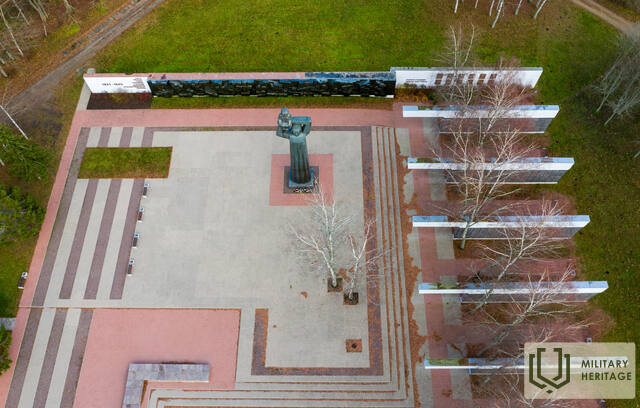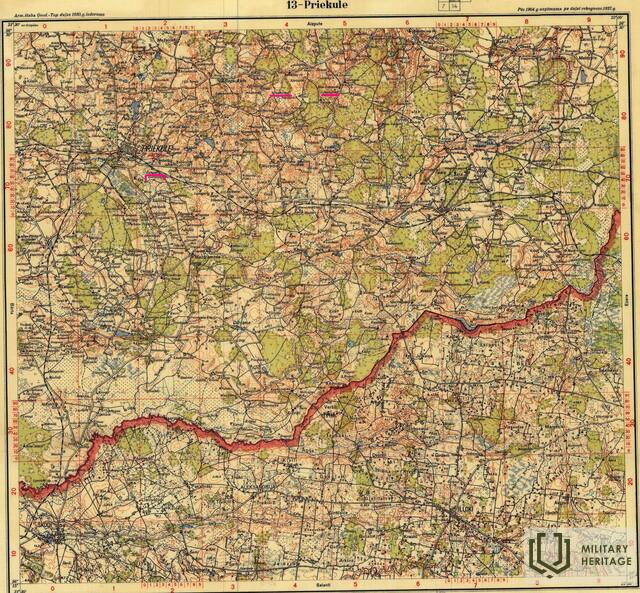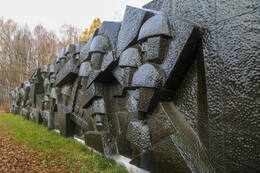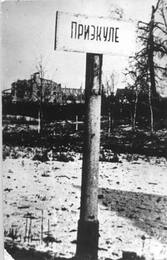"Война не закончена, пока не похоронен последний солдат" (Братское кладбище Приекуле)
Курземе была создана как отдельное и изолированное поле боя 10 октября 1944 года. Около 500 000 солдат немецких вооруженных сил числились в окружении. По донесениям штаба 1-го Прибалтийского фронта, для полного освобождения всего Балтийского побережья требовалось лишь «небольшое усилие». Однако бои в Курземе продолжались еще семь месяцев, и Курземе стал символом окончания Второй мировой войны.
За семь месяцев боев до мая 1945 года немецкие вооруженные силы потеряли в Курземе 154 108 убитыми, ранеными и пропавшими без вести солдатами, а Красная Армия потеряла около 400 000 убитыми, ранеными или пропавшими без вести красноармейцами.
Самый большой мемориал на могилах солдат Красной Армии
Связанная хронология
Связанные темы
Связанные объекты
Мемориальный ансамбль Воинского братского кладбища в Приекуле
Мемориальный ансамбль Воинского братского кладбища в Приекуле, установленный на обочине дороги Лиепая - Приекуле - Шкода, является крупнейшим захоронением советских воинов Второй мировой войны в Балтии, где захоронено более 23 000 советских солдат. Приекульская операция была одним из самых ожесточенных сражений Курземской крепости с октября 1944 года по 21 февраля 1945 года. Битва за Приекуле в феврале 1945 года продолжалась семь дней и ночей без перерыва и закончилась крупными потерями с обеих сторон. Последний памятник выдающегося латышского скульптора К. Зале (1888–1942), который должен был быть установлен в память о борьбе за свободу в Алое, украшал Воинское братское кладбище в Приекуле до тех пор, пока его не превратили в мемориал. В период с 1974 по 1984 годы братское кладбище в Приекуле площадью 8 га было преобразовано в мемориальный ансамбль павшим во Второй мировой войне.
Его авторы - скульптор П. Залькалне, архитекторы А. Золднерс, Э.Салгус и дендролог А. Ласис. В центре мемориала находится изображение Родины-матери высотой 12 м, а имена павших выгравированы на гранитных плитах. До восстановления независимости Латвии каждый год 9 мая здесь очень широко отмечался День Победы.











